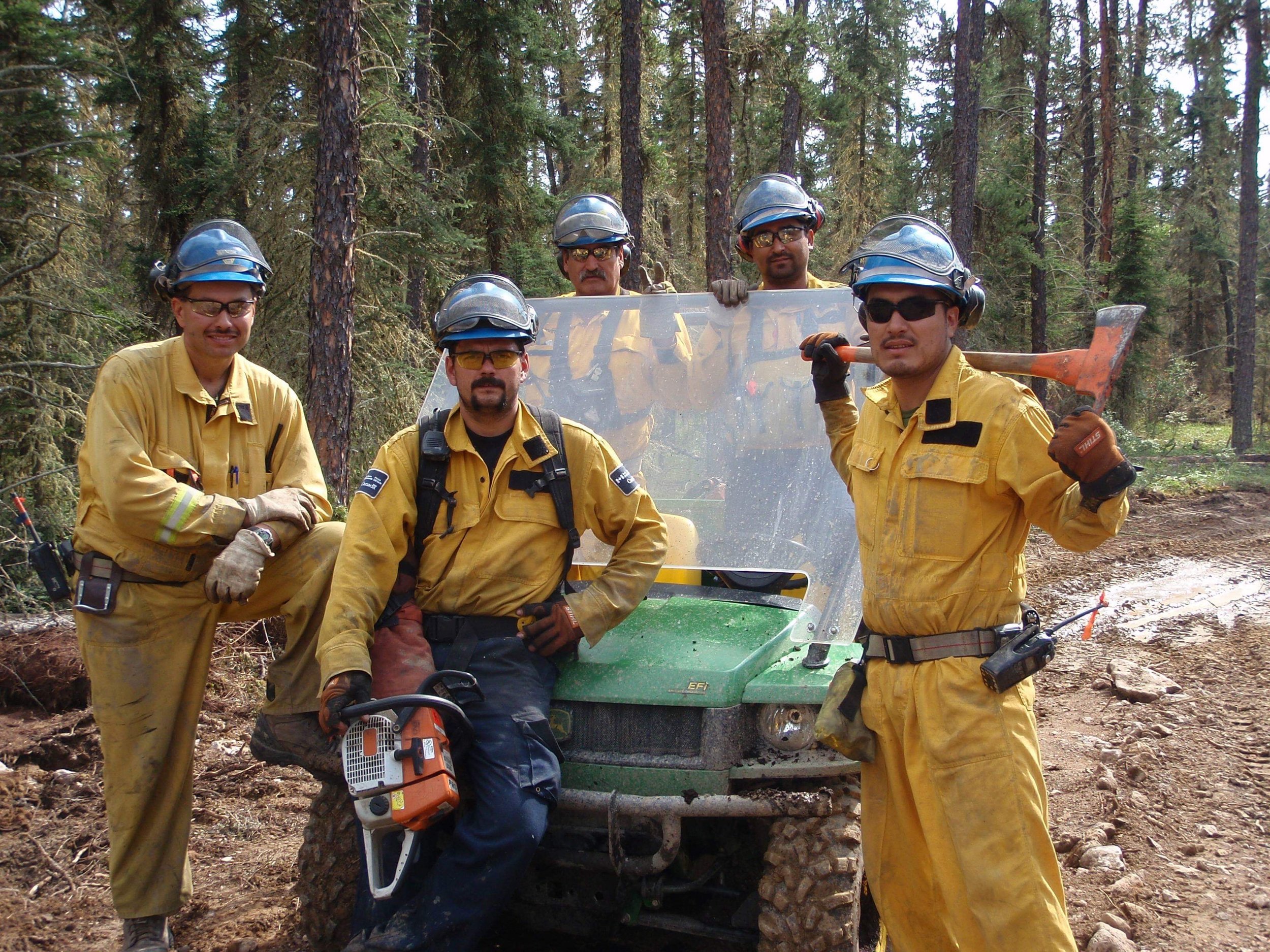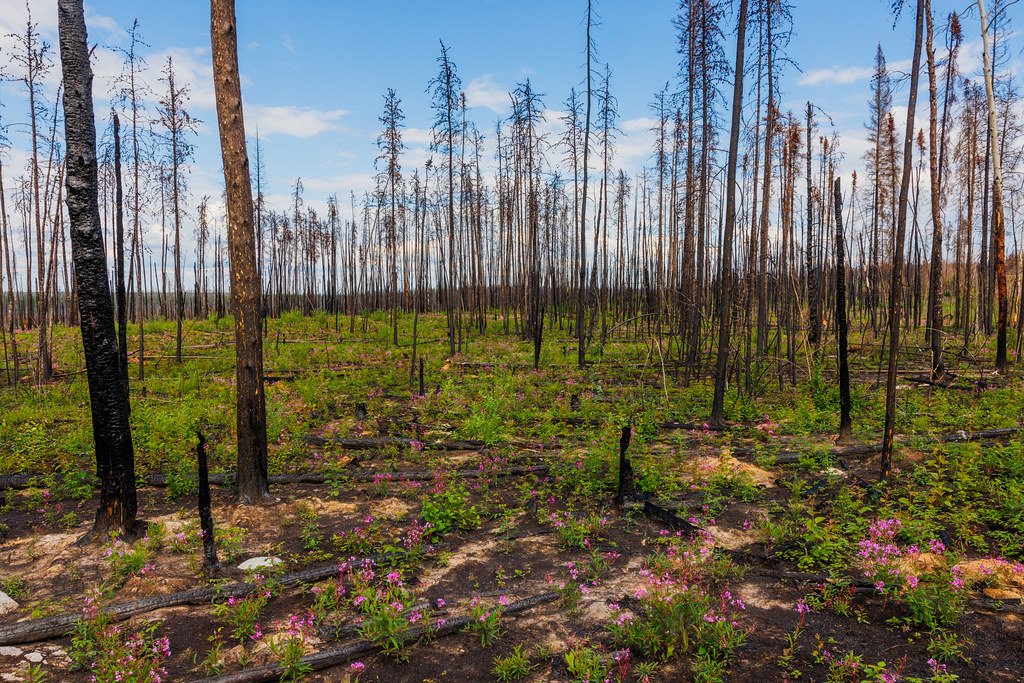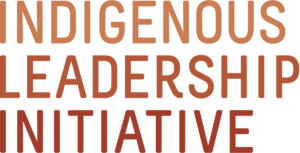Fire Stewardship
Indigenous fire stewardship restores the land and asserts Indigenous Nations’ inherent rights to care for their territories.

Indigenous Peoples have been observing fire on the land for millennia. They have developed complex knowledge systems for responding to fire and using fire to sustain healthy lands.
Despite centuries of forced relocation, residential schools, and western forest management, many Indigenous fire keepers have carried their knowledge into the present, adapting to new conditions like climate change. And many Nations are working to revive Indigenous fire stewardship within their territories.
Indigenous fire stewardship offers solutions for navigating out-of-control fires.
Indigenous fire stewardship includes all activities Indigenous Peoples undertake related to fire that assert their sovereignty and inherent rights. It includes emergency response and firefighting, but also cultural burns and landscape-wide planning that reduce the risk of out-of-control fires. It is a year-round, ongoing relationship between people, fire, and the land.
Indigenous leadership on fire offers essential solutions for navigating this era of supercharged fires. By investing in Guardians, for instance, we can beef up the country’s capacity to make communities and landscapes more resilient. We can create a fleet of professionals ready to prevent, respond to, and recover from fires.
The Indigenous Leadership Initiative works to uplift Indigenous fire stewardship across the country. Guardians have a central role to play in honouring Indigenous responsibilities to fire, and our goal is straightforward: to ensure all First Nation communities that want Guardians on the ground to support managing and responding to wildfires have the capacity, training, and resources to do so.
In 2022, ILI shared the Role of Guardians in Wildfire Response and Management, a proposed national strategy offered as a draft for discussion with Guardians, First Nations, fire agencies, researchers, philanthropies, and others.
In 2023, we helped support pilot projects to explore different dimensions of the strategy, including a Fire Guardians Workshop with the Blood Tribe, a Fire Guardians scoping project with Prince Albert Grand Council, wildland firefighter training with the Innu Nation, and collaborations with Riding Mountain Alliance. We also collaborate with the Thunderbird Collective—a group of the country’s leading experts on Indigenous fire stewardship—and in 2024 we agreed to house the collective as part of ILI.
ILI will continue to advance policies that strengthen Nationhood through fire kinship. That includes advocating for sustained support to:
Train existing Guardians in fire and emergency response, helping prepare hundreds of communities to navigate fires safely.
Launch Fire Guardians programs that focus on year-round fire stewardship, helping ensure forests across the country are less likely to fuel out-of-control fires.
Support Nations to develop fire stewardship plans for Indigenous Protected and Conserved Areas, to sustain large healthy landscapes through cultural fire, firefighting, and other strategies.
Cultural Fire
Cultural fire entails putting fire on the land to achieve cultural objectives. Many Indigenous Nations live within fire-dependent landscapes like the Boreal Forest. They have observed how fire shapes the forest, releasing seeds from jack pine cones, creating meadows where animals graze, and making medicinal plants more abundant.
Indigenous Peoples learned how to use fire, and many communities call it “good fire,” because it is good for land, good for animals, and good for people.
Fire keepers have known the value of good fire for generations. More recently, western science has caught up to this understanding, with studies showing that thinning and burning understory reduce fire risk by removing fuel and improving forest health.
Many Nations are asserting their inherent right to care for their territories, including with fire. With sustained support, more Nations will put good fire on the land and help restore forest health.
Progress on the Ground
“Indigenous Relationship to Fire Is All Year Long”
Indigenous-led stewardship takes a holistic view of fire on the landscape. It’s not just about suppressing fire, but also about putting fire on the land where it is needed to help prevent out-of-control fires. Read this Q&A with Dr. Amy Cardinal Christianson to learn more.
A Solution to Reduce Wildfire Risk and Cost: Indigenous Guardians
Canada is on track to record the second-largest wildfire season in 20 years. No single solution will relieve us of this challenge, but there are tools that will help forests, communities and budgets become more resilient. Some of those tools are hiding in plain sight – they just have to be activated. Read this Globe & Mail opinion piece to learn more.
Indigenous Fire Stewardship
Indigenous fire stewardship includes all activities Indigenous Peoples undertake related to fire that assert their sovereignty and inherent rights. It includes emergency response and firefighting, as well as cultural burns and landscape-wide planning that reduce the risk of out-of-control fires.













